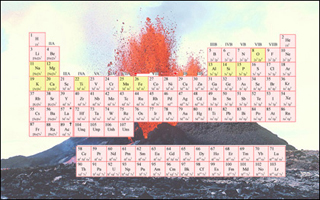Course Description
The emphasis of this course is to use Trace Element Geochemistry to understand the origin and evolution of igneous rocks. The approach is to discuss the parameters that control partitioning of trace elements between phases and to develop models for the partitioning of trace elements between phases in igneous systems, …
The emphasis of this course is to use Trace Element Geochemistry to understand the origin and evolution of igneous rocks. The approach is to discuss the parameters that control partitioning of trace elements between phases and to develop models for the partitioning of trace elements between phases in igneous systems, especially between minerals and melt. Subsequently, published papers that are examples of utilizing Trace Element Geochemistry are read and discussed.
Course Info
Instructor
Departments
Learning Resource Types
notes
Lecture Notes

The Periodic Table of the elements is essential for understanding the geochemical behavior of trace elements. Elements in yellow squares are major elements because their abundances in igneous rocks are typically greater than 0.1 wt.%. Note that the majority of elements (pink squares) have abundance less than 0.1 wt.%; they are trace elements. Background photo (from USGS) is a basaltic eruption at Kilauea Volcano, Hawaii. (Image by MIT OpenCourseWare).








